Attracting Birds with Bioswales: An Eco-Friendly Approach to Water and Wildlife
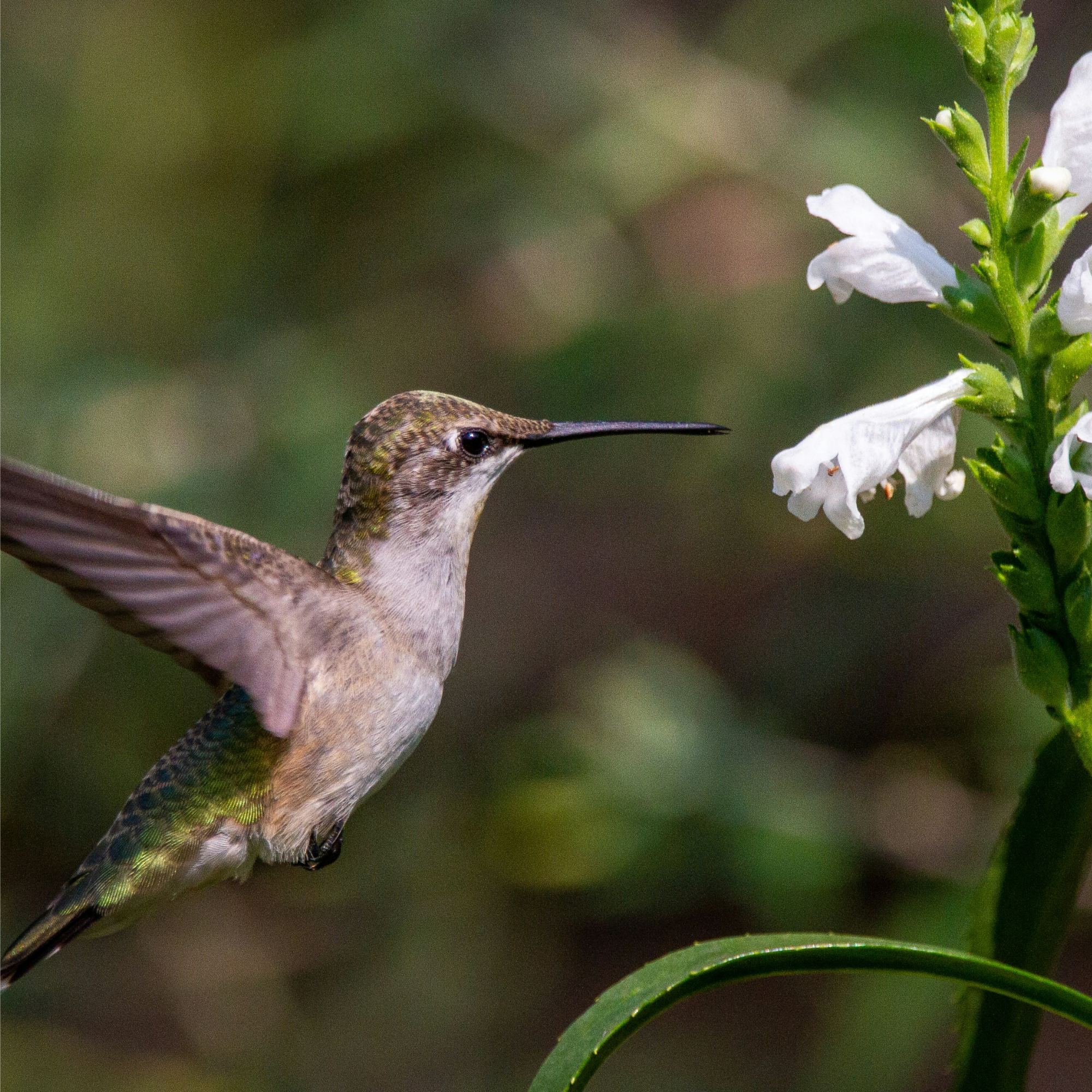
Planning your summer garden projects in winter might seem odd, like ordering hot chocolate in the middle of a heatwave. But just as seasoned gardeners know the joys of first blooms, they also know the importance of early planning. For most of us, the perfect time for planning a garden project falls somewhere between New Year's Day and the first signs of spring.
And if you're a nature enthusiast looking to attract more birds this year, a bioswale might be the project for you. Briefly, a bioswale is a shallow, vegetated depression designed to capture and filter stormwater runoff. It helps to improve water quality and reduce flooding by allowing water to percolate into the ground. Equally important for bird enthusiasts, bioswales are also havens for large numbers of bird species.
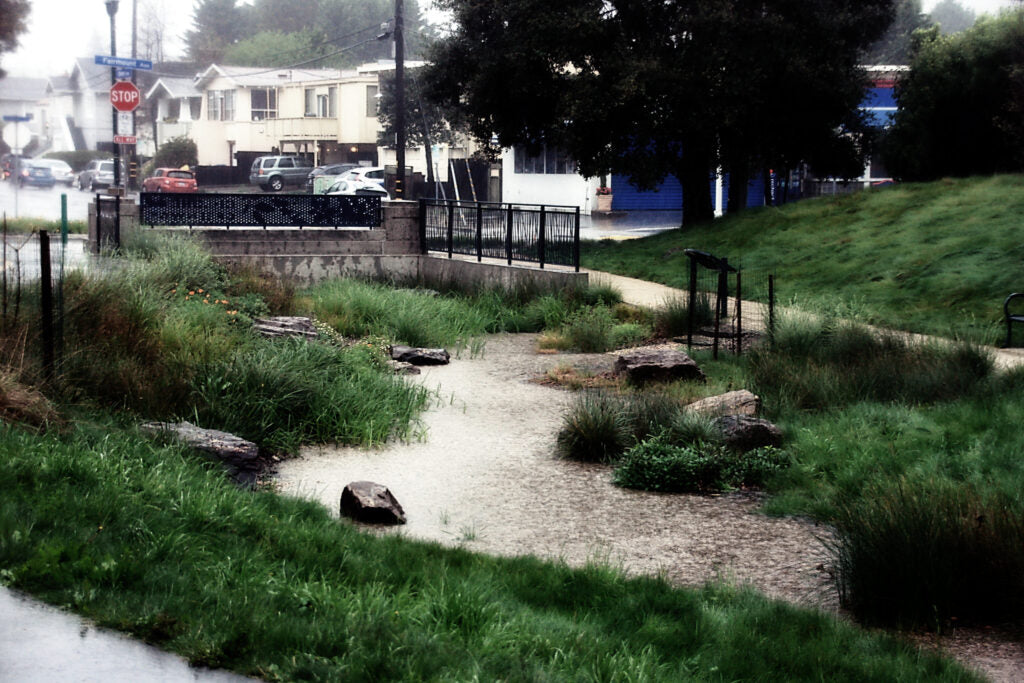
A Bioswale near San Francisco with plenty of space and water for birds (source)
In this blog post, we'll delve into the process of creating a bioswale that is both functional for managing stormwater and inviting for our feathered friends. From selecting the right location to choosing the best native plants, we will guide you through each phase of establishing an eco-friendly sanctuary that supports local wildlife and contributes to biodiversity. Bring on the birds!
What Exactly Are Bioswales?
Although they're not a new idea, bioswales are the new heroes of urban and suburban ecology. As noted earlier, bioswales are permanently installed shallow depressions designed to manage stormwater and remove pollution from runoff. Plants, rocks, and soil all serve to slow, collect, and clean rainwater. The image below gives a good idea of their construction and function.
 Typical wet swale and pollutant removal mechanisms (source)
Typical wet swale and pollutant removal mechanisms (source)
Many bioswales rely on plants and soil alone to filter and drain storm runoff, but optional pipes can be added in situations where more drainage is needed. The placement of a drainage pipe is shown in the illustration below.
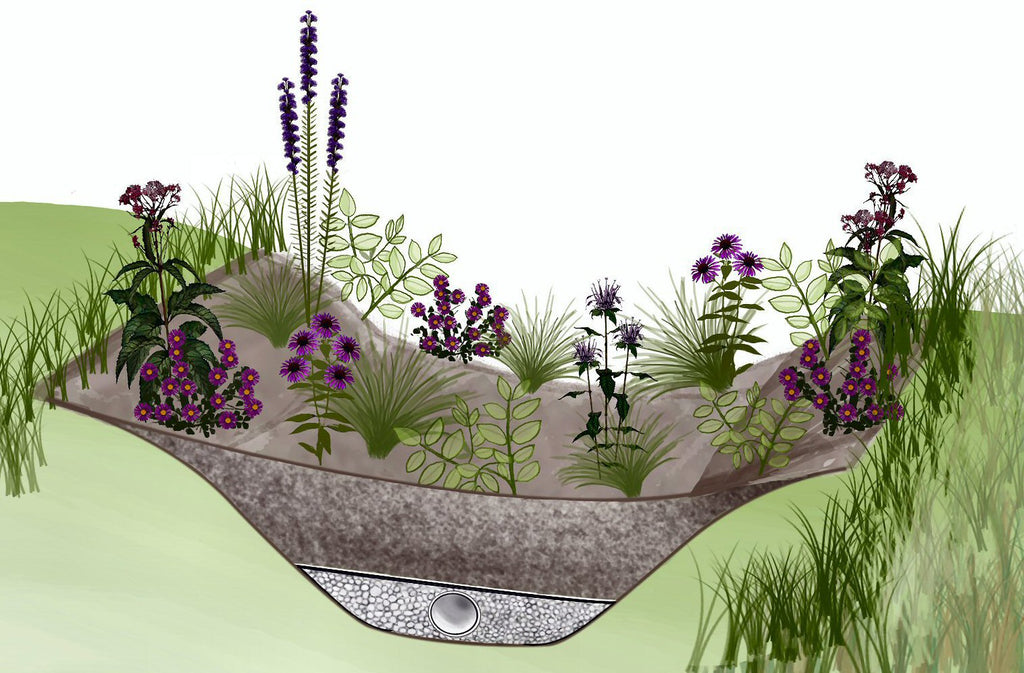
Cross section of a bioswale with an optional underdrain
Either way, think of bioswales as nature's own plumbing system - a little slice of the wild right in your backyard. Although similar to ditches, their function differs. A ditch simply moves water away, but a bioswale serves an ecological function, slowing down and absorbing rainwater instead of letting it rush off into drains or areas where it could cause flooding, erosion, or pollution of waterways.
 Typically, stormwater runoff enters a nearby waterway (source)
Typically, stormwater runoff enters a nearby waterway (source)
Why is Rainwater a Problem?
Rainwater runoff is not as pristine as it appears. The water that flows over our yards and streets is a universal solvent, dissolving substances as it goes. In fact, water dissolves more substances than any other liquid, collecting pollutants from a variety of sources along its journey.
- Fertilizer: Many gardeners unknowingly contribute to contaminated runoff by applying fertilizers to their plants and lawns. When it rains, the excess nutrients - think nitrogen and phosphorous - get washed into our water systems, leading to a phenomenon called nutrient pollution. These chemicals can cause harmful algal blooms in waterways, depriving aquatic life of essential oxygen and light.
- Pet waste: Even residual amounts of waste contain enough bacteria and parasites to harm human health and contribute to nutrient pollution. Again, nutrients and pathogens are carried away when it rains, ending up in rivers and lakes.
- Additional sources of pollution include pesticides, motor oil, soaps, and litter. Pesticides used in gardens and lawns can wash into nearby bodies of water, affecting their chemical balance. Similarly, motor oil, soaps, and litter that collect on our streets find their way into the water system when it rains, adding a cocktail of harmful substances.
Beauty, Birds, and Bioswales
With that in mind, it's easy to see why bioswales, with their natural filtering power, are an eco-friendly solution for managing runoff and pollution. But they're not just efficient little eco-warriors; they're also masters of disguise. With the right design, a bioswale can look like any regular garden bed, filled with a variety of beautiful plants that adapt to both wet and dry spells. Endlessly adaptable, bioswales can be modified to complement the existing aesthetic of your garden while still fulfilling their primary role of rainwater management.

A suburban bioswale filled with native plants (source)
Best of all, bioswales are a five-star all-you-can-eat buffet for birds, offering a feast of insects, seeds, and shelter. Attracting birds to your garden or outdoor space isn't just about enjoying their cheery song or admiring their plumage; birds play a pivotal role in maintaining a healthy garden ecosystem. They are nature's cleanup crew, helping to control pests by feeding on insects, spiders, and other critters that may wreak havoc. Plus, their foraging habits assist in seed dispersal, promoting biodiversity. By luring birds to your garden you're fostering a thriving, balanced ecosystem. But we didn't need to convince you of that, did we?
Designing and Building Bioswales
Creating a bioswale isn't difficult, but it does take some planning. And if you're doing everything yourself, it takes time and energy to get the job done. Proper planning can be the difference between a rainwater superhighway or a muddy mess, so take your time a this stage. First, you'll need to assess your garden's layout, soil type, and typical rainfall.
You'll want to design your bioswale to maximize the time water spends traveling through it - called the "residence time" - allowing more opportunities to filter out pollutants and let water seep into the ground. Not that you want the water hanging around long enough to attract mosquitoes or unsavory microbes. Good drainage is a key component of any good bioswale. So here's what you need to know.
Soil Composition
Your bioswale's performance is directly tied to your soil's composition. Sandy soils have excellent drainage but poor nutrient holding capacity. Clay soils, on the other hand, drain slowly but are great at retaining nutrients. Knowing your soil type will help you choose the right plants and design your bioswale for maximum efficiency.
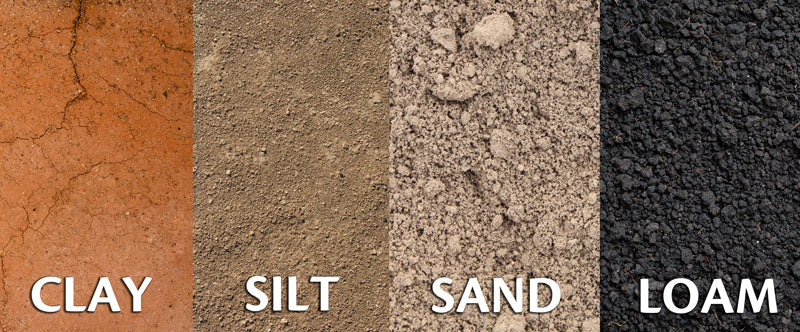
Depending on where you live, soil testing might have to wait until spring thaw. Likely, you'll have a good idea of your soil type and drainage behavior already, but testing is still good idea. You can either buy a soil testing kit and follow the directions or learn how to do it yourself here.
Amending Soil for Improved Drainage
Based on the test results or your experience working with your soil, you may decide to amend it. Soil amendments are substances you add to enhance its physical properties, such as drainage, permeability, water retention, and aeration. If the bioswale drains too slowly, you'll end up with standing water. If it drains too quickly, the residence time might not be sufficient to filter out pollutants. A standard filtration rate is about half an inch per hour. If your soil's filtration rate varies significantly, consider these amendments.
- For poorly drained soil, mix in sand. Sand particles are larger and more irregularly shaped than clay particles, which creates more spaces in the soil for water to flow through. If water still doesn't drain quickly enough, consider adding an underdrainage system.
- For really sandy sites that drain too quickly, add organic matter like compost, leaf mold, or well-rotted manure.
Location
The best location for your bioswale is an area that collects runoff but is at least 10 feet away from any buildings to prevent possible water damage. Also, avoid placing your bioswale over any underground utilities or septic systems, or too close to your neighbor's property line. Watch your garden during a heavy rain and observe where the water flows. The ideal spot for your bioswale is where the water is naturally channeled.

If you're lucky enough to have an existing ditch, then you have the perfect location (but check with your local municipality first so you know what's allowed and whether a permit is required).
Physical Properties of a Bioswale
A well-functioning bioswale is engineered to maximize its effectiveness at filtering runoff. The slope of a bioswale is typically gentle, which is sufficient to facilitate water flow but prevent erosion of the vegetation and substrate.

A wide bioswale teeming with plants (source)
Width is also an important consideration and is often determined by the volume of water to be managed; bioswales can vary significantly in size, though a common width is between 4 and 8 feet. These specifications ensure that a bioswale can handle the water flow during storms while allowing time for pollutants to be filtered out. For more information, sources like the Environmental Protection Agency or local stormwater management guidelines provide detailed specifications and best practices.
Plant Selection
Bioswales incorporate both wet and dry zones, so you'll need to select plants that can thrive in these conditions. Wet zones are relatively self-explanatory: they're the areas of your bioswale where water collects most frequently. Plants in this area should be able to tolerate "wet feet" for extended periods. Dry zones, on the other hand, are where water collects less frequently and drains faster. Plants in this area should be able to withstand periods of drought.
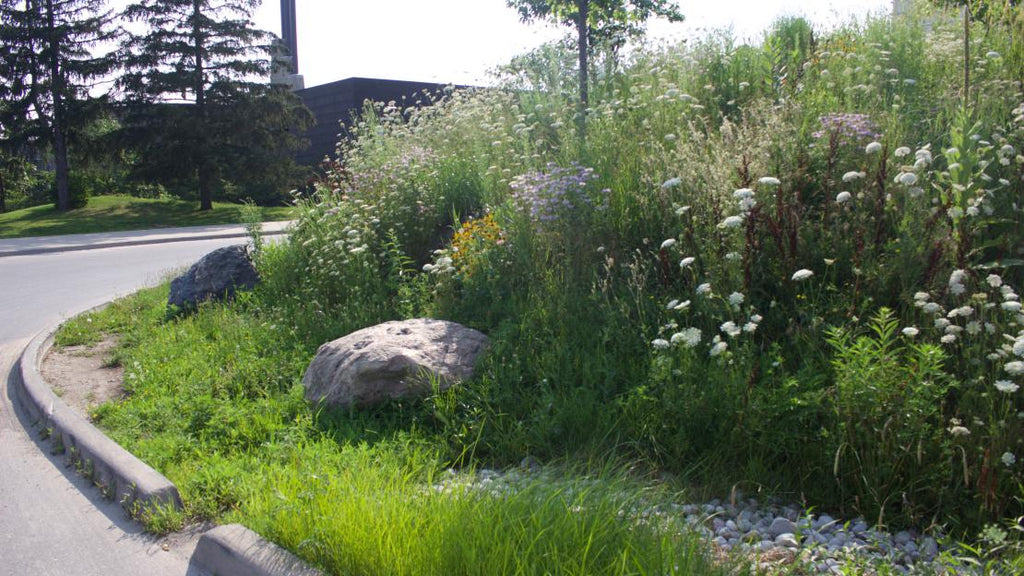 A bioswale manages stormwater runoff at a busy bus loop in Toronto
A bioswale manages stormwater runoff at a busy bus loop in Toronto
When selecting plants for your bioswale, aim for a diverse mix of native species that will attract birds and pollinators to your garden. Invasive species can quickly take over and disrupt the balance - it's always a good idea to ask questions at your local nursery or do a little homework in advance.
Some common native plants that work well in North East bioswales include the New England aster, red-twig dogwoods, rudbeckia, great blue lobelia, prairie blazing star (liatrus), and the cardinal flower.
Weed Control in Bioswales
Before planting up your bioswale, you'll want to give some thought to weeds. While brilliant at managing rainwater and attracting birds, bioswales can become a breeding ground for unwanted weeds if not properly maintained. Fret not, for there are numerous methods to keep these unwelcome guests at bay that will allow your bioswale to function efficiently and look appealing.
Weed Barrier Cloth
One effective method is the use of a weed barrier cloth, a permeable fabric that lets water and air to pass through into the soil while blocking the sunlight that weeds need for growth. To install, lay the fabric over the soil before planting, then cut holes where you want your plants to grow. Cover the fabric with a layer of mulch for added protection and a more pleasing appearance. However, keep in mind that over time organic matter can accumulate on top of the fabric, providing a platform for weeds to grow. Regular maintenance is key.
Gravel Grids
Gravel grids are another weed deterrent. These lattice-like structures, filled with gravel, provide a stable and permeable surface, discouraging weed growth while allowing rainwater to seep through. When used in conjunction with a weed barrier cloth, the gravel grid offers an additional layer of protection against weed invasion. Remember though, just like with the weed barrier cloth, some maintenance will be required to prevent organic matter build-up and subsequent weed growth.
Hand Weeding
If you prefer to hand weed, do so regularly. Remove weeds while they're still young and their root systems are less established to make the task easier.
Regardless of the method chosen, remember that the key to effective weed control is regular maintenance. Keep a vigilant eye on your bioswale, and your birds will thank you!
Bird-Friendly Features
Now comes the fun part - making your bioswale even more inviting by adding bird-friendly features sure to attract your favorite species. Here are a few ideas to get you started.
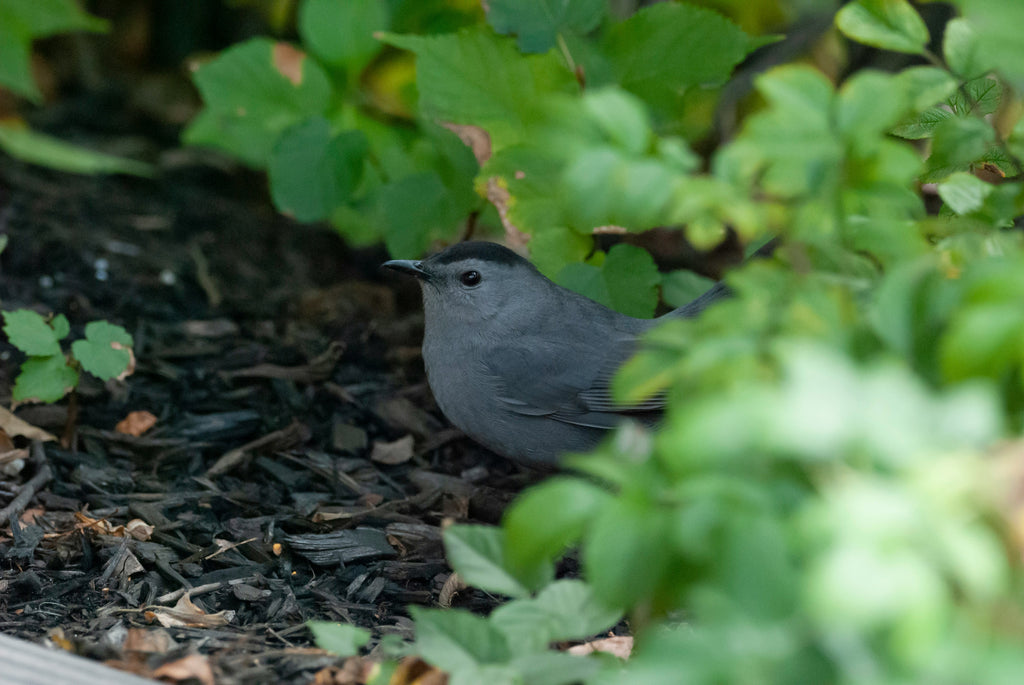
Photo by Tyler Jamieson Moulton on Unsplash
Shallow Edges
Birds are drawn to water, but they prefer shallow, gently sloping edges that allow them to wade in without risk. If your bioswale is more sloped, you can always create a flatter surface near the edges.
Rocks
Apart from their decorative value, rocks provide essential perches for birds. Strategically placing larger rocks or boulders around the bioswale provides much-needed rest spots for birds, enabling them to comfortably survey their surroundings and indulge in a bit of sunbathing.
Nesting Material
And let's not forget nesting material. Native grasses are great additions to bioswales. Switch grass or Panicum virgatum, for example, withstand both seasonal flooding and drought, and makes excellent nesting material if left standing over winter.

Panicum grass over 4 seasons (source)
When it's time to cut the grasses in spring, leave them on the ground for a few days or time the cuttings up and hang them from a nearby tree. Offering natural fibers like twigs, dry grasses, and leaves in the vicinity of your bioswale creates a paradise for nest-building birds.
Native Plants
Incorporating native plants into your bioswale is a surefire way to attract local bird species across all seasons. Echinacea, or example, is native to wide swathes of North American. If left standing over winter, the seed heads are a valuable source of food for local and migrating birds - they're especially attractive to cardinals and goldfinches.

Photo by Ankhesenamun on Unsplash
Most native plants provide familiar and beneficial habitats for birds, offering them food sources such as seeds, berries, and insects. Plus, native plants are typically well-adapted to local soil and climate conditions, making them an ideal choice for your bioswale.
Getting Bird Nerdy
The more you know about the birds likely to visit your bioswale, the more fun you'll have. Understanding their needs, habits, and preferences, and making adjustments accordingly, will make your bioswale a top destination for feathered visitors. We've listed some resources below, but there's lots more available, so dig in!

All About Birds (allaboutbirds.org) by the Cornell Lab of Ornithology is a comprehensive online guide to bird identification. It provides in-depth information about hundreds of bird species, including their habitats, food preferences, and migration patterns.
The Audubon Society (audubon.org) is a fantastic resource for discovering local bird species. Their native plants database also allows you to search for plants by zip code and see a list of birds you can attract.
BirdWatching (birdwatchingdaily.com) is an online magazine for birdwatchers of all levels. It offers a range of articles and resources on bird species and bird attracting tips.
eBird (ebird.org) is a real-time, online checklist program that provides rich data sources for basic information on bird abundance and distribution.
A Quick Word About Costs
Costs are always a consideration when planning garden projects, and the cost of building a bioswale is no exception. Costs can vary wildly from expensive to nearly free. The elements that affect the overall cost include the dimensions of the trench, whether an underdrain is needed, the number and size of plants, and labor costs. Can you excavate the area yourself, or will you need the help of a professional? If you're doing the work yourself you'll need a plan for how to dispose of the excess soil.
And what about the vegetation? Plants can be expensive. Can you grow some from seed or solicit donations from friends, neighbors, and relatives? Do you have a large inventory of plants that can be divided and replanted, and are they suitable for the conditions in your bioswale? If you're buying plants, consider buying the smallest size offered. Native perennials typically reach maturity in three years and continue to grow larger before they need dividing. Keeping the costs down is definitely feasible, especially if you're flexible about the timeframe for completing your project.
Routine Maintenance of Bioswales
Maintaining your bioswale helps ensure that water flow is unimpeded, and that plants and birds continue to flourish. Here are some routine maintenance tasks to keep your bioswale in top-notch condition.
Debris Removal: Over time, your bioswale might accumulate leaves, twigs, or other debris. These can block water flow or create pockets of stagnant water - not what you want in your environmentally friendly drainage system. Regularly inspect your bioswale and remove any debris.
Invasive Plant Control: While native plants are beneficial, invasive species can disrupt the balance. They can out-compete native plants for resources and they're often less beneficial to local bird species. Keep an eye out for invasive plants in your bioswale, and remove them immediately.
Checking Water Flow: After heavy rainfall, check your bioswale to ensure it's draining properly. If water stands in the bioswale for more than 48 hours, it may indicate a problem with the soil or the bioswale's structure.
Plant Health: Monitor the health of your bioswale plants. If they’re showing signs of disease or stress, they may need more attention. Diseases can spread and affect the overall health of your bioswale, so it's important to address any issues as soon as you spot them.
Inspired? Time to Start Planning!
Whether nestled in bustling city pockets, suburban backyards, or across expansive rural landscapes, bioswales seamlessly integrate into any setting, demonstrating remarkable adaptability while fulfilling their indispensable role in environmental preservation.

Bioswale in a Los Angeles Zoo parking lot
The principles are the same, wherever you live. So, this winter, as you're cozied up with your favorite hot cocoa, consider planning out your bioswale project. You'll not only make your garden more attractive to birds, but also contribute to a healthier environment.
Leave a comment
Comments will be approved before showing up.
Also in News
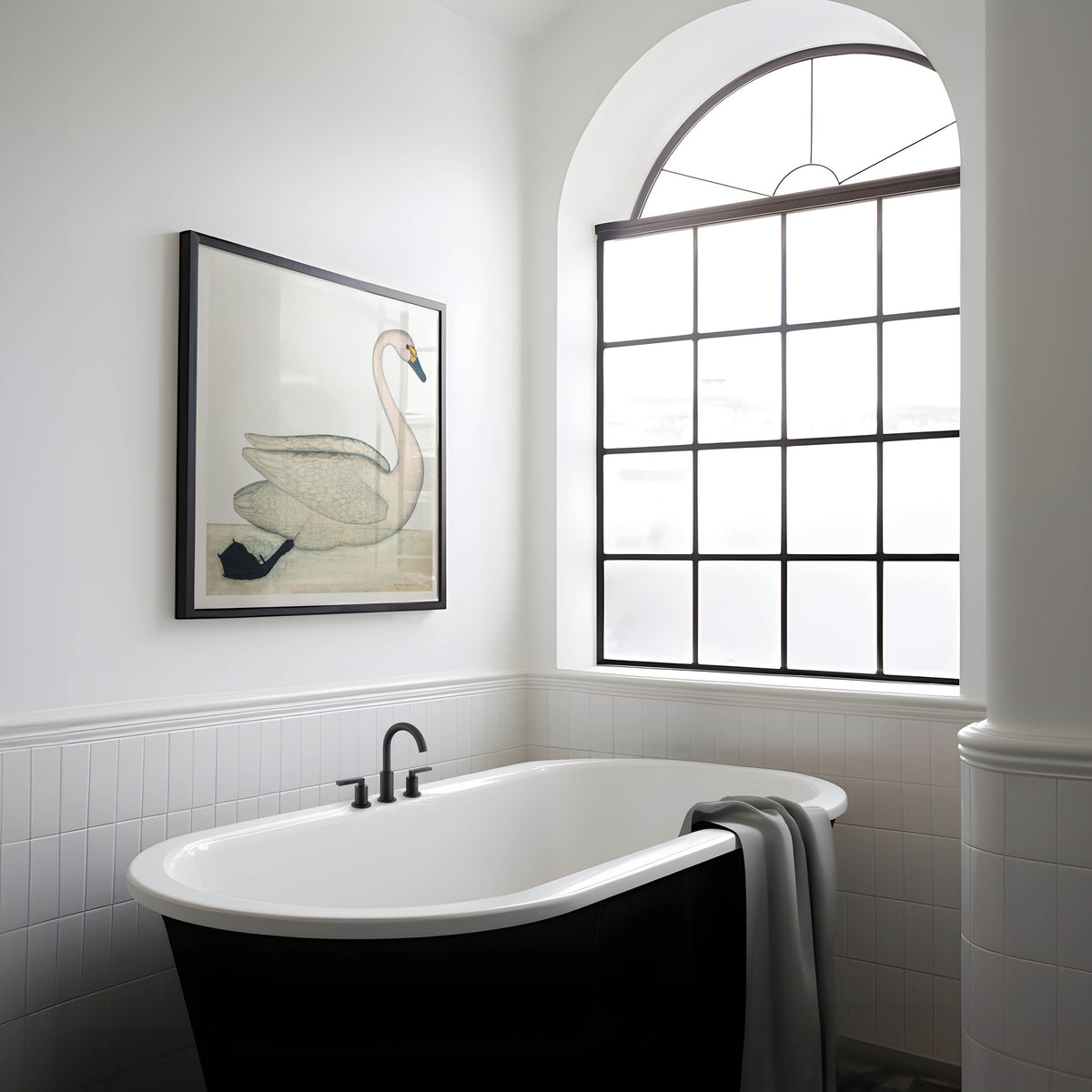
From Beak to Chic: Bird Prints to Enhance Your Bathroom Decor
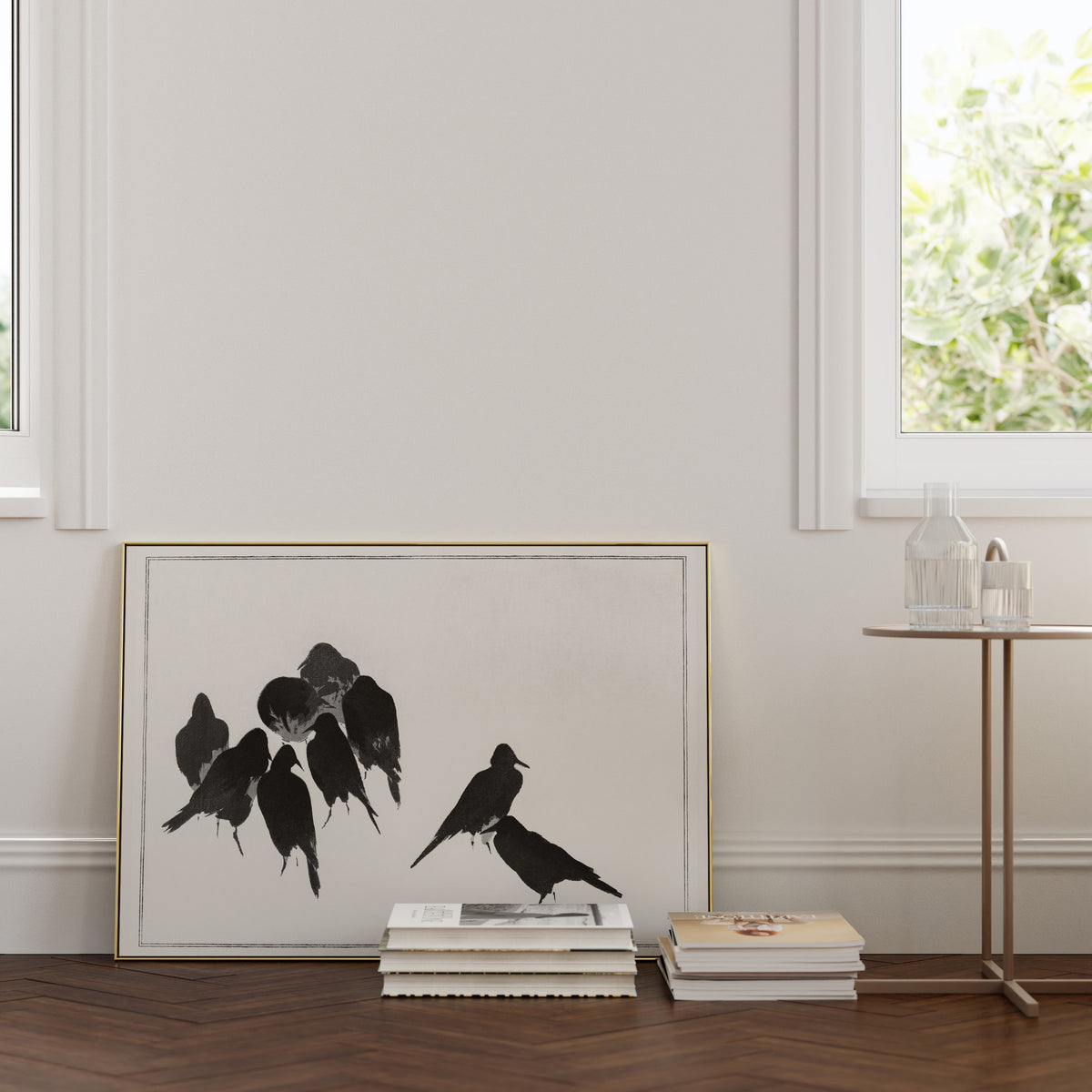
Monochrome Magic: Using Black and White Bird Prints to Amplify Your Home Decorating Style
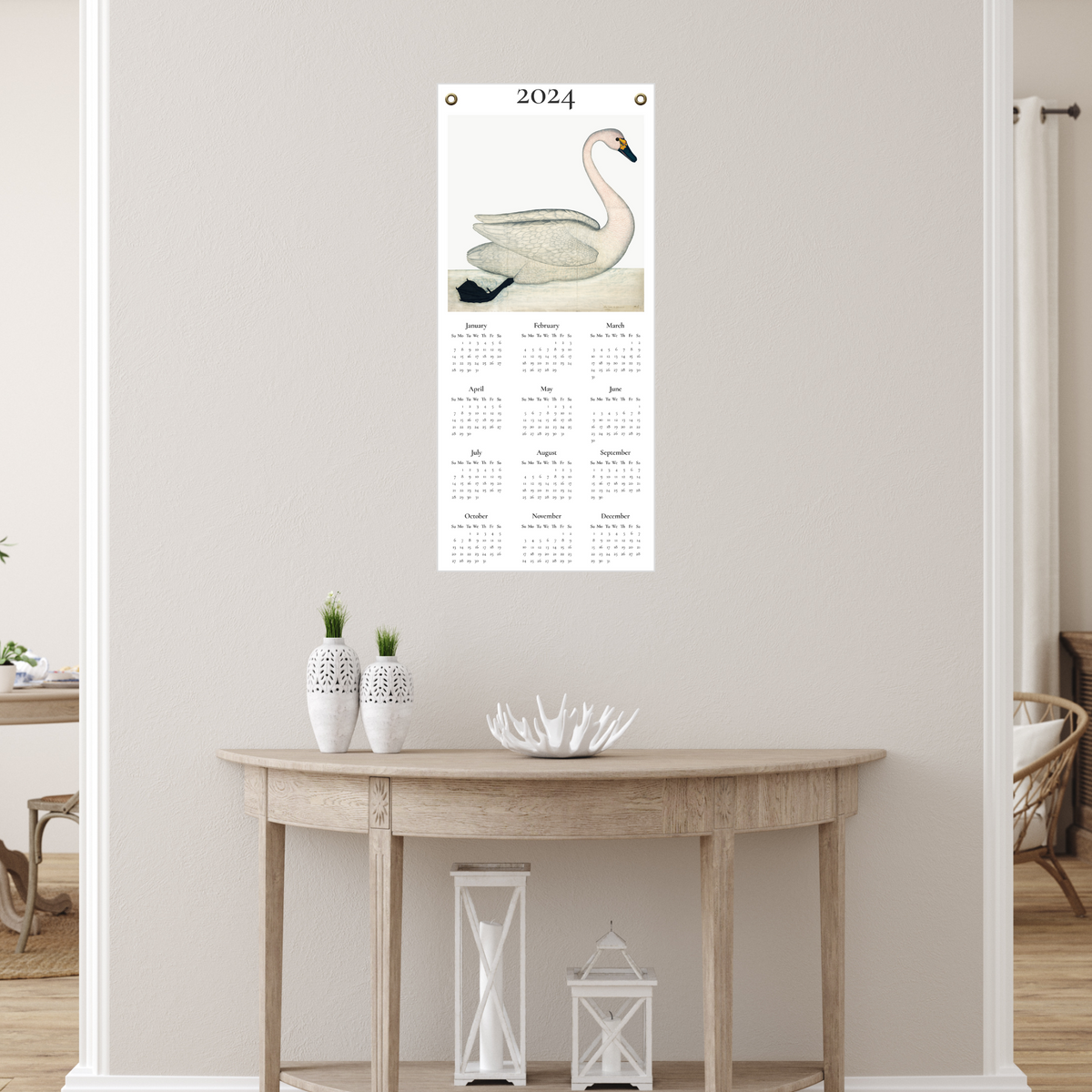
Introducing Our 2024 Bird-Themed Calendars: Year-at-a-Glance Masterpieces
Discover the beauty of the avian world through our stunning bird-themed calendars for 2024. Printed on high-quality, archival fine art canvas and featuring a mix of vintage and original artwork, these calendars are more than just a way to track time. Perfect for both young enthusiasts and seasoned birders, this calendar serves as a daily reminder of our connection to nature and the joys of birdwatching.

